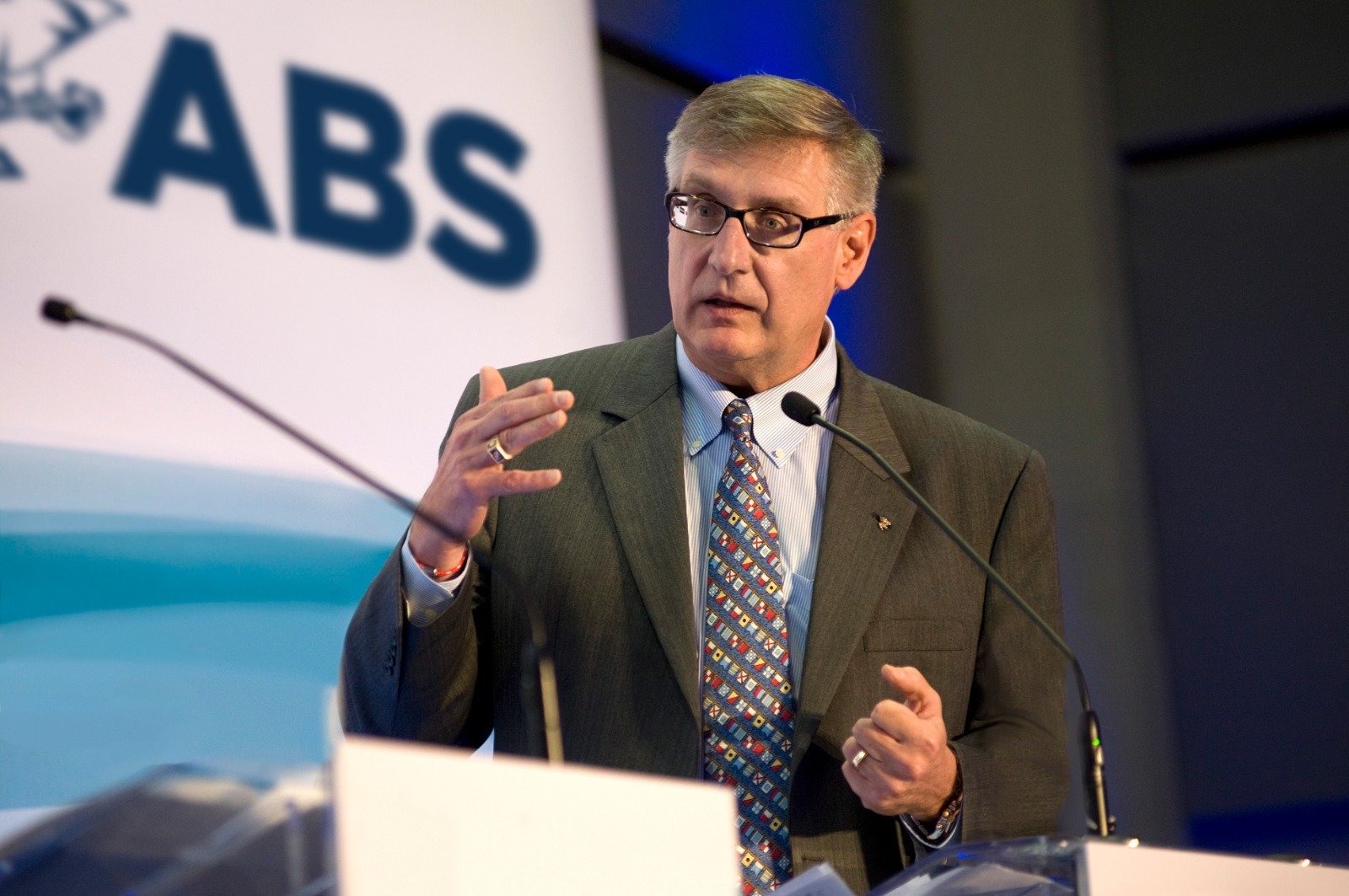Laying a foundation for shipping’s emissions challenge
A breakthrough year for industry action on emissions will only be meaningful if governments actively support decarbonised shipping, says Christopher J. Wiernicki, ABS Chairman, President and CEO.

According to Wiernicki, the next decade will be instrumental in defining the next 30 years of GHG emissions action. He notes that new business drivers and even a new language – the cost of CO2 per tonne mile, for example – are emerging as shipping shifts its focus to the challenge.
“The next ten years will determine the speed and scope of the transition, as well as what is desirable versus what is doable. New shapers are emerging, of which regulation is one, and new boundary conditions need to be looked at as we go through the clean energy transition.”
Among those boundary conditions for new clean fuels are safety, availability, scaling up production and developing distribution infrastructure – an area Wiernicki believes has been under-explored to date. While the intent may be there to differing degrees, outcomes must be pinned down a lot quicker than the current pace of progress suggests they will be.
The timescale of LNG’s evolution as a widespread alternative fuel is a case in point. While LNG-fuelled vessels today fill many pages of the orderbook, it has taken decades for the fuel to write its place in shipping, gradually fulfilling all those boundary conditions.
“We can debate the limitations of LNG, but the point is that any alternative fuel will have to go down the same path to become scalable and available. 2050 may seem like a long way away, but for the next family of fuels it is going to come sooner than we think.”
Enlisting governments
To accelerate the progress, Wiernicki suggests that the laudable moves from the shipping industry itself – a “commercial gravity” that he says has grown in force dramatically over the past year – will not be sufficient. Ship owners, charterers and technology companies have all been working hard, but they need government support to help remove some of the risks involved in prototype development and infrastructure investment.
“This is where the message needs to resonate. We can get to IMO’s 2030 targets with a relatively clear line of sight, but the industry will have a hard time getting to 2050 unless they get some help. Governments need to step up. Their expenditure and investment is going to drive the speed and scope to get us there.”
Governments are starting to “wake up,” he says. But a lot needs to be done in the remainder of the 2020s to give shipping a fighting chance of meeting its long-term targets. Clean fuel is one area where state intervention will be critical. Hydrogen and its derivatives are “government fuels”, says Wiernicki – a reference to both the huge state investments and the regulatory frameworks needed to enable their production and widespread use.
“You need the government to step in and put these big blocks together so we can use them commercially.”
Harmonised frameworks
As regulatory frameworks emerge, governments also need to play a role in ensuring they are harmonised. Wiernicki cites the EU’s Emission Trading Scheme as a “big deal” but notes the discrepancy between the market-based measure and IMO’s own timeframe for emission reductions.
“A vessel can follow a carbon trajectory based on IMO requirements, but it may not be able to trade in Europe in 10 years’ time without modifications. The low-hanging fruit is to get the regulatory framework locked down, otherwise they are moving targets. There are tough decisions to be made.”
Discussions at COP26 were an important statement of intent on shipping’s emissions reduction, notably the Clydebank Declaration, whose signatories committed to develop green corridors that could help to validate the idea of zero emission shipping. Stakeholders will include governments and ports as well shipowners and technology providers. Wiernicki believes that, despite few concrete projects to date, these initiatives are crucial to accelerating maritime climate action.
“A green corridor is more than a ship going on from one port to another on clean fuel; it is a microcosm of decarbonisation that involves looking at regulation, safety, infrastructure and ship-to-shore connectivity through a compliance, commercial and market lens. It is a wonderful opportunity but more needs to be done.”
The role of class
Within the context of decarbonisation, Wiernicki sees classification societies occupying a “sweet spot” to help drive progress. Class already acts as a bridge between government and industry in several areas, as well as acting as a guardian of safety and an independent technical authority.
“It is exciting to be leading a class society at this time, bringing everything that we have done together to be that industry partner helping to move things forward. Class is built for this.”
In the drive to accelerate the transition and to bridge the gap between government and industry, there is an important role for membership associations like ICS too, says Wiernicki. They can help to raise awareness that shipping has a critical role to play in global decarbonisation, and that governments that ignore it risk missing their own environmental targets.
“Every year counts and we want to make sure we are not just working on industry projects but there is some higher-level momentum moving forward,” he concludes. “I hope that we can make the speed and scope of decarbonisation consistent with the outcomes we want, and that by the end of the year we begin to see industry and government working closer and talking about the right things.”
Related content

Shaping the Future of Shipping conference

BIMCO, ICS, INTERCARGO and INTERTANKO launch new fuel oil survey

Ships Must Be Prepared for Strict Implementation of IMO Sulphur Rules, Says ICS, But Radical Alternative Fuels Should Also Be Explored
